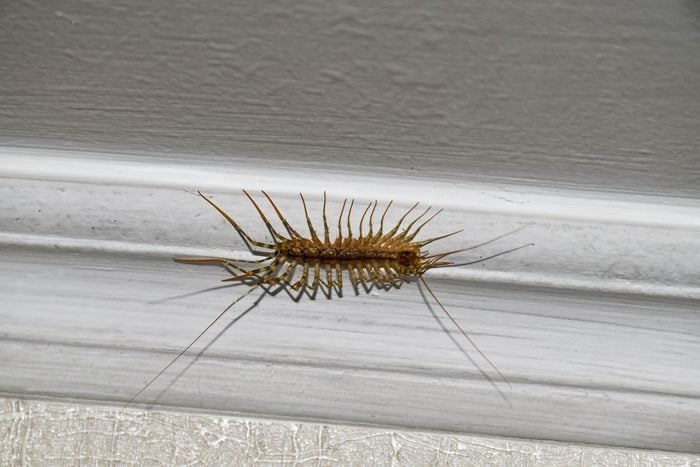
House Centipede
You’ll find this aptly-named centipede (Scutigera coleoptrata) all over North America, as well as Hawaii. It can grow from 1- to 1-1/2-in. long. Although a large one can look fearsome with its fifteen pairs of legs, it’s basically harmless, though it can inflict a painful nip if handled.
Its yellow-gray body features three stripes running along the back, plus long antennae protruding from the front and the back.
You’re most likely to find a house centipede in a dark corner in the basement, although it will wander anywhere it finds moisture. It’s actually a useful house guest because it eats cockroaches, clothes moths and other insect pests.
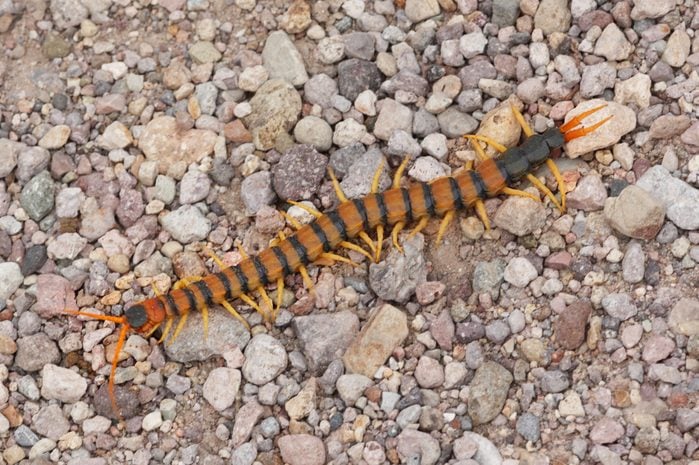
Giant Desert Centipede
The common name of Scolopendra heros is something of a misnomer, because it doesn’t just live in the desert. It has been sighted in Arkansas, southern Missouri, Louisiana, Kansas, Oklahoma, Texas, New Mexico and Arizona. Closely related species are common in Hawaii and Japan, where it’s known as mukade.
This centipede is a giant, though, reaching lengths of 6-1/2-in. or more. Its flat body can be reddish, tending toward orange or brown, with a black head.
And it’s as fierce as it looks. It bites, and the two-pronged tail can deliver a painful and possibly dangerous sting. It’s also virtually indestructible. You can step on it, and it will wriggle away as if nothing happened.
In Japan, the usual method to dispatch a mukade involves picking it up with chopsticks and cutting it in half with a scissors.
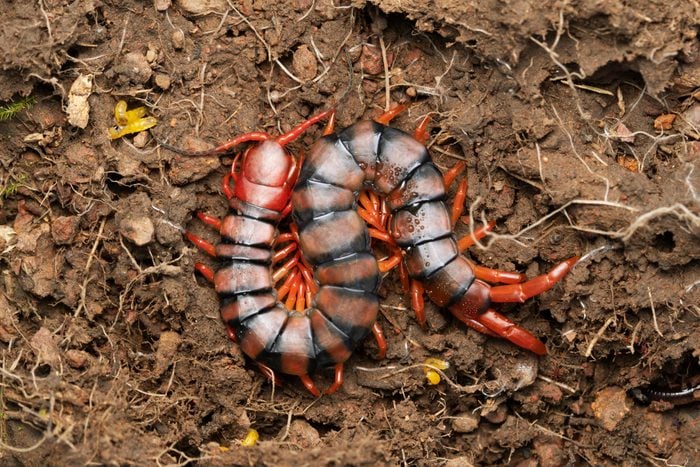
Tiger Centipede
Sometimes called the common desert centipede, Scolopendra polymorpha calls the South and West home, from Louisiana to California and up to Oregon. It inhabits dry grasslands, deserts and forests, living under rocks or digging burrows.
This is another large centipede with a flat body. Like its Giant Desert cousin, it can grow longer than six inches, with a bright red or orange head and orange to tan body. Its most distinguishing feature: The black bands that highlight each part of its multi-segmented body, hence the name.
This centipede is also venomous. Although its bite isn’t fatal, it is painful.
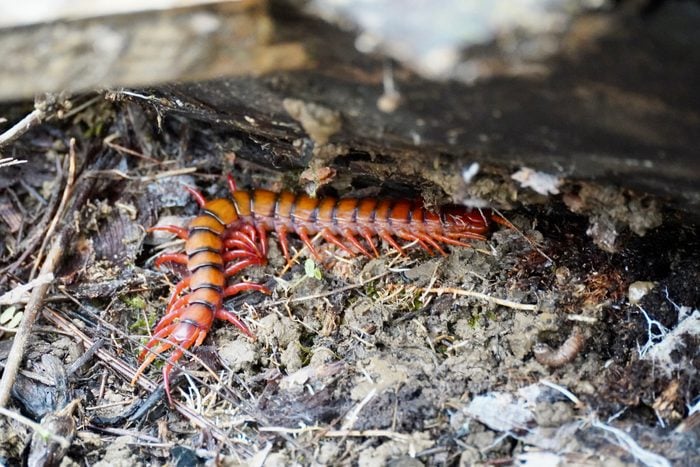
Eastern Red Centipede
As the name suggests, this centipede (Scolopocryptops sexspinosus) features a uniformly red or orange body, with lighter orange legs. About 2-1/2-in. long, it can be found across the East Coast from southern Canada to Carolina, as well as the Gulf Coast. It has also been spotted in parts of British Columbia and Vancouver Island.
It likes moisture and usually burrows under logs and other wet forest litter. It’s seldom found in houses because conditions are too dry, but you could come across one outdoors in compost or a woodpile. As you might expect from the fiery coloration, this centipede is venomous with a painful bite.
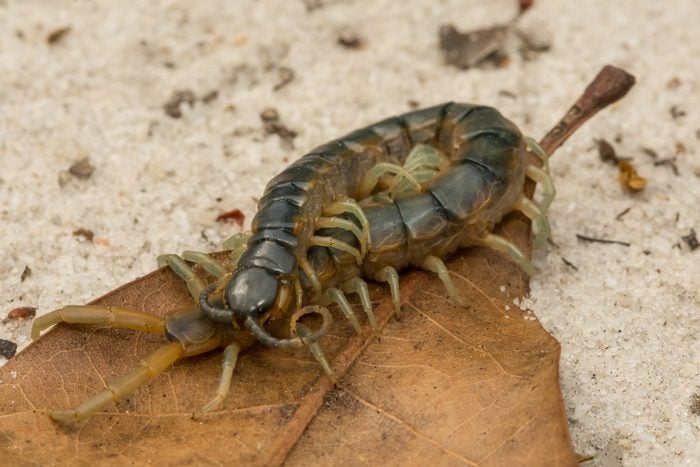
Eastern Bark Centipede
This three-inch-long centipede (Hemiscolopendra marginata) can be found in the Eastern U.S. and Canada, and as far west as the Rockies and in British Columbia.
Body coloration varies from solid orange brown to dark brown, often with an olive-colored stripe on its back. The legs and antennae are yellowish, and the head brownish red.
These nocturnal creatures prefer to live outdoors under rocks and logs, but may venture indoors if conditions are right (plenty of darkness and moisture). They’re venomous and bite, though males and females have different types of venom.
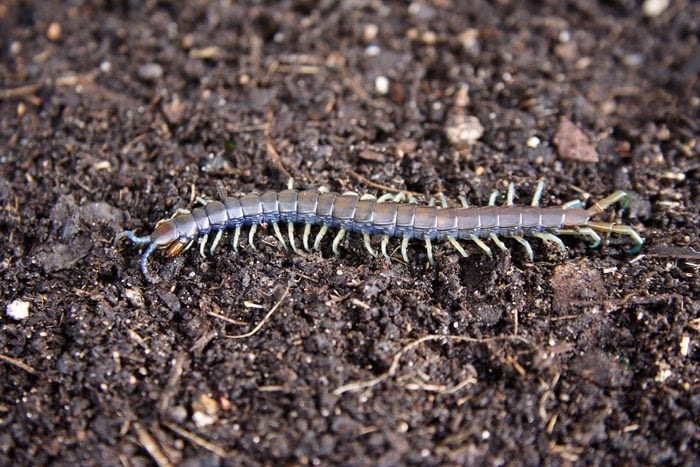
Diamondback Soil Centipede
In general, soil centipedes belong to a huge family (Geophilomorpha) with too many species to mention. The diamondback soil centipede (Geophilus vittatus) is a representative.
You probably won’t find one in your house, but you might unearth one digging in the garden. About two inches long, it’s light brown with dark brown diamond shapes along its back. It’s common all across North America.
This centipede lives under any debris on the forest floor and may burrow into the soil if it’s soft and loose enough. It doesn’t have eyes and doesn’t bite, but does secrete a poisonous substance from its underside to subdue preys. Because it’s so small and its bite so ineffective, it doesn’t pose any threat to humans.
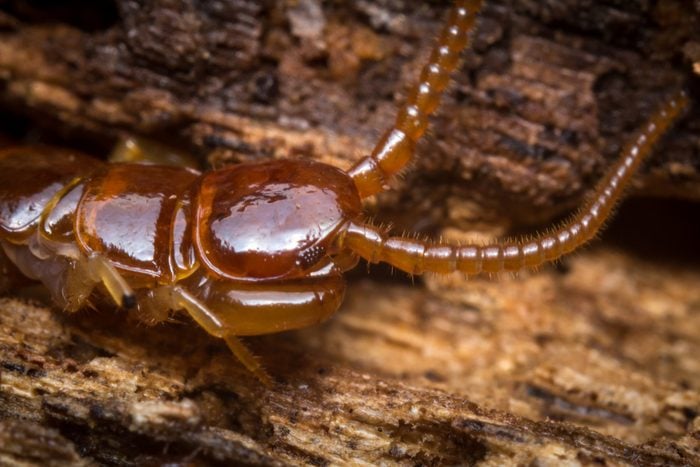
Cryptoid Centipede
This centipede (Theatops californiensis) lives exclusively in the damp forests on the West Coast of North America, from British Columbia to the Mexican border. It can grow from 1/2- to 2-1/2-in. long, with a dark orange to dark brown body.
Cryptoid centipedes prefer to wander outdoors, but frequently find their way into basements, laundry rooms and other damp places inside buildings. These critters aren’t quite as venomous as their larger cousins, but they can deliver a painful bite, as you might discover if you step on one with bare feet.
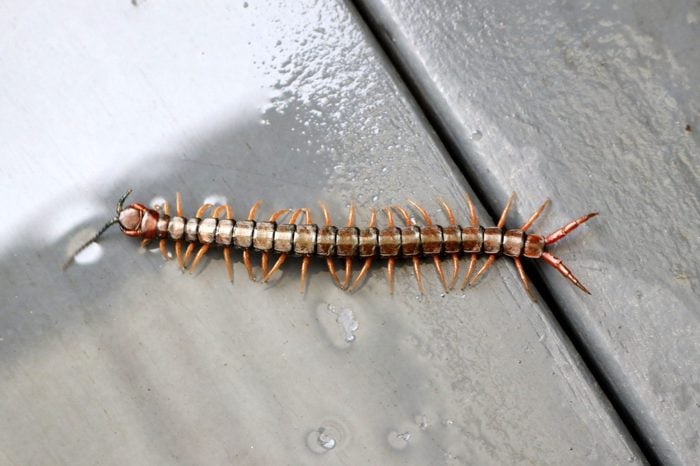
Brown Centipede
The brown centipede (Lithobius forficatus) originated in Europe, where it’s so widespread it’s known as the common centipede. In North America, it’s most likely to be found on the Eastern Seaboard. It’s only one inch long and uniformly brown, with long antennae and a really long tail.
This arthropod has venomous fangs that are so small the venom doesn’t pose much danger to humans. It hunts at night. If you find one in the house, it will be in the basement or some other dark place. Consider yourself lucky, because it’s ridding your house of pesky insects.
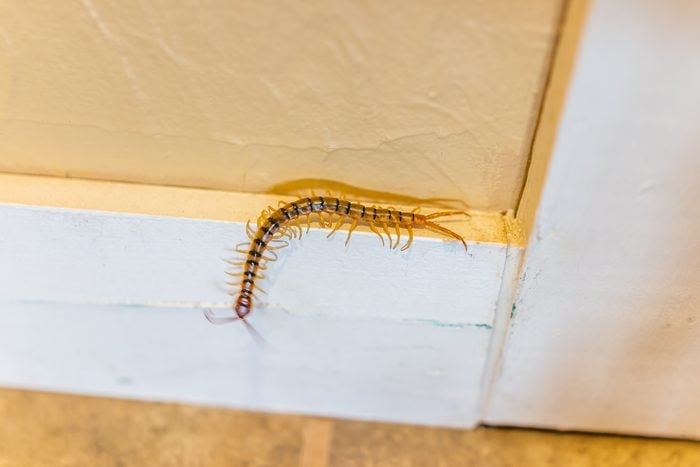
How To Keep Centipedes Out of Your House
If you see a centipede in your house, your first reaction might be to kill it. But even if you manage to catch it — which is difficult, because centipedes are really fast — you should think twice.
House centipedes perform a valuable service by eating cockroaches, moths and termites. In the case of larger centipedes, you must weigh the benefit of pest control against the possibility of being bitten.
The best way to keep centipedes out of your house? Keep it clean and dry, and eliminate the insects centipedes feed on. Seal the foundation and baseboards with caulk, and affix insect-proof sweeps to the bottoms of doors.
